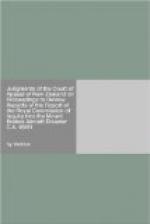Mr Chippindale conducted intensive inquiries at the site of the crash and instructed that all reasonable steps were to be taken to recover equipment that would bear upon the cause of the accident and any documents which were still accessible before they were blown away into crevasses or covered with snow. Two important items were soon discovered: the cockpit voice recorder was found at once and after a period of systematic digging into the snow the digital flight data recorder was recovered as well. The first piece of equipment provided a tape recording of much that was said on the flight deck during a period of 30 minutes preceding the time of the collision with the ice slope. The second, often described as the “black box”, provided conclusive information concerning course, altitude, and other data relating to the flight and functioning of the aircraft at the relevant period of time.
Mr Chippindale continued his investigation in New Zealand where he inspected records gathered from the airline. He also interviewed pilots and other officers with relevant information. In addition he travelled overseas. At that point he prepared an interim report so that he could give notice of his tentative findings to all those whom he felt might have some degree of responsibility for the accident. Thus the airline and representatives of the deceased pilots and others were given an opportunity to provide any appropriate answer to the chief inspector before he completed his final report. All this was attended to and his report, which is dated 31st May 1980, was made available to the Minister of Transport on 3rd June 1980. The Minister then approved the report for release as a public document on 12th June 1980. As mentioned, the Royal Commission was appointed for the purpose of conducting a public inquiry at that same time.
There is a difference in the two reports upon the cause of the accident. Mr Chippindale considered the probable cause to have been pilot error. On the other hand the Royal Commission exonerated the pilots completely and spoke instead of “incompetent administrative airline procedures”. Since this case is concerned with allegations by the Commissioner that the affected officers of Air New Zealand had engaged “in a pre-determined plan of deception ... to conceal a series of disastrous administrative blunders” (administrative mistakes which he himself had found to be the real cause of the disaster) it is not unimportant to ask what relevant information the airline had actually been able to provide which was not supplied to Mr Chippindale. For that last reason the material made available for consideration by Mr Chippindale deserves some examination. An example concerns the change made to the final stage of the computer flight track to the Antarctic which the Commissioner regarded as a central reason for the accident. During a period of fourteen months prior to the fatal flight Air New Zealand’s ground computer had contained an incorrect geographical reference to the southern waypoint of the journey at McMurdo. Accordingly, in that period it was shown incorrectly on any computer print-outs of the flight plan. But a few hours before departure of the DC10 an amendment was made and the flight crew was not informed that amended co-ordinates (since their briefing 19 days earlier) had thus been fed into the aircraft’s computer.




